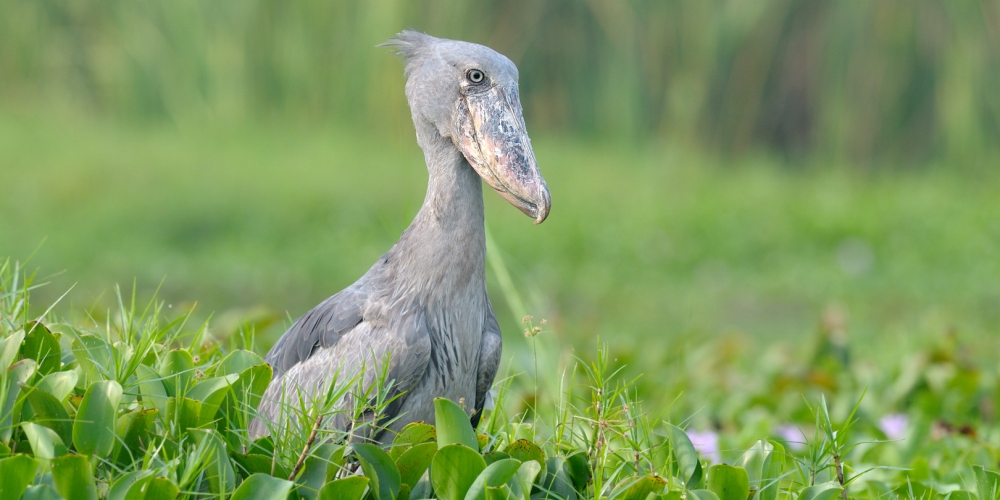Birding Safaris in Uganda: A Paradise for Avian Enthusiasts. Uganda has earned its reputation as one of Africa’s premier birding destinations, offering an extraordinary avian spectacle that draws enthusiasts from across the globe. With over 1,060 recorded bird species—representing roughly 50% of Africa’s avian diversity and approximately 10% of the world’s total—Uganda stands as a birdwatcher’s paradise within a relatively compact geographical area. For travelers planning safaris to Uganda, the country’s diverse ecosystems create unparalleled opportunities to witness rare, endemic, and migratory species in their natural habitats, making African safaris in Uganda an essential experience for serious birders and casual nature lovers alike.
Why Uganda Stands Out for Birding Safaris

Uganda’s exceptional bird diversity stems from its unique location at the ecological crossroads where eastern savannah meets western rainforest and northern semi-desert. This convergence of distinct biogeographical zones creates remarkably varied habitats within a small country roughly the size of Great Britain. From the papyrus-fringed wetlands of Lake Victoria to the misty montane forests of the Albertine Rift, from acacia-dotted savannah to lowland tropical rainforest, Uganda’s landscape mosaic supports an astonishing array of birdlife.
The country’s elevation ranges dramatically from 620 meters above sea level at Lake Albert to 5,109 meters atop the Rwenzori Mountains’ snow-capped peaks. This altitudinal variation creates distinct ecological niches, allowing forest specialists, highland endemics, wetland species, and savannah birds to thrive within relatively short distances of each other. For travelers embarking on safaris to Uganda, this means exceptional birding diversity can be experienced within a single comprehensive itinerary.
Uganda also serves as a crucial migration hub, hosting birds from Europe, Asia, and other parts of Africa, particularly from November to April when Palearctic migratory species arrive. This seasonal influx adds hundreds of additional species to Uganda’s already impressive resident bird populations, creating dynamic birding opportunities that change throughout the year.
Must-See Bird Species on Uganda Safaris
While Uganda lacks the abundance of full endemics found in island nations, it compensates with spectacular concentrations of rare, range-restricted, and highly sought-after species. Fox’s Weaver is recognized as Uganda’s only full endemic species, found primarily in the moist savannas and flooded grasslands around Lake Kyoga and Lake Opeta in eastern Uganda. This rare, brightly colored weaver represents a flagship species for conservation, as habitat loss has significantly reduced its range.
The iconic Shoebill Stork stands as Uganda’s most famous avian attraction. This prehistoric-looking bird with its massive shoe-shaped bill is particularly rare, making sightings in wetlands like Mabamba Swamp a thrilling experience. The Shoebill’s distinctive appearance, towering height of up to 150 centimeters, patient hunting behavior, and preference for lungfish create unforgettable encounters for visitors on African safaris in Uganda. Beyond Mabamba, Shoebills can be spotted in Queen Elizabeth National Park’s Ishasha Sector, along the Nile Delta in Murchison Falls National Park, and at Ziwa Rhino Sanctuary.
The Albertine Rift harbors approximately 24 endemic bird species, with Bwindi Impenetrable National Park being the only location where all of these can potentially be observed. These montane forest specialists include the African Green Broadbill, Rwenzori Turaco, Grauer’s Cuckooshrike, Chapin’s Flycatcher, Red-faced Woodland Warbler, and Shelley’s Crimsonwing. The difficulty of accessing these birds in their dense forest habitats—combined with their restricted ranges—makes successful sightings particularly rewarding for dedicated birders on safaris to Uganda.
Other highly prized species include the elusive Green-breasted Pitta found in Kibale Forest, the spectacular Great Blue Turaco with its striking blue and green plumage, the Bar-tailed Trogon, and numerous sunbirds, flycatchers, and forest warblers that inhabit Uganda’s diverse ecosystems. Each habitat zone contributes its own specialty species, ensuring that African safaris in Uganda offer continuous discovery and excitement.
Premier Birding Destinations
Bwindi Impenetrable National Park tops the list for serious birders planning safaris to Uganda. This UNESCO World Heritage Site hosts approximately 350 bird species, including 24 Albertine Rift endemics, making it the single most important birding destination for forest specialists and high-altitude species. While most visitors come to Bwindi for mountain gorilla trekking, combining primate encounters with dedicated birding walks creates an extraordinarily rich wildlife experience. The park’s Ruhija and Buhoma sectors offer particularly productive birding trails, where patient observers can spot African Green Broadbills, Rwenzori Turacos, and numerous other rarities amid the dense vegetation.
Mabamba Swamp has achieved legendary status among birders as the premier location for Shoebill encounters. Located on the northern shores of Lake Victoria near Entebbe, this 2,424-hectare Ramsar-designated wetland hosts over 300 bird species and offers the highest probability of Shoebill sightings anywhere in East Africa. Birding at Mabamba is conducted via traditional wooden canoes that glide through narrow papyrus-lined channels, with early morning excursions providing the best chances for encounters. Beyond Shoebills, visitors can expect excellent sightings of Papyrus Gonolek, Malachite Kingfisher, African Jacana, Blue-breasted Bee-eater, Swamp Flycatcher, and numerous waterbirds. The swamp’s proximity to Entebbe International Airport—just 45 minutes by road—makes it ideal for day trips at the beginning or end of longer safaris to Uganda.
Queen Elizabeth National Park showcases Uganda’s birding diversity across multiple habitat types. Over 600 bird species have been recorded across the park’s savannas, wetlands, forests, and lakes. The Kazinga Channel boat cruise provides spectacular waterbird viewing, including African Fish Eagles, Pied Kingfishers, various heron species, and occasionally Shoebills. The Maramagambo Forest harbors forest specialists, while the Ishasha sector’s fig forests and savannah grasslands attract different species entirely. The park’s variety makes it essential for comprehensive African safaris in Uganda.
Kibale Forest National Park, celebrated for chimpanzee tracking, offers outstanding forest birding with over 375 recorded species. Six Albertine Rift endemics occur here, including the Green-breasted Pitta, which is extremely elusive and represents a prized find for experienced birders. The adjacent Bigodi Wetland Sanctuary adds 138 additional species to potential sightings, including wetland specialists and colorful frugivores. The combination of primate tracking and birding makes Kibale an essential stop on safaris to Uganda.
Semuliki National Park stands apart as Uganda’s only lowland tropical rainforest ecosystem. This park is the only place in East Africa to see many Guinea-Congo regional species, with over 441 recorded birds including 46 Guinea-Congo biome specialists. Species like the Congo Serpent-eagle, Nkulengu Rail, Black Dwarf Hornbill, and Long-tailed Hawk occur nowhere else in the region, making Semuliki indispensable for serious listers on African safaris in Uganda.
Murchison Falls National Park combines dramatic scenery with excellent birding across savannah, riverine, and wetland habitats. The boat trip to the base of Murchison Falls provides opportunities for Shoebill sightings in the Nile Delta, while savannah areas host Abyssinian Ground Hornbill, Secretary Birds, and various raptors. The park’s size and habitat diversity make it suitable for extended stays during safaris to Uganda.
Other notable birding destinations include Mgahinga Gorilla National Park for montane forest species, Lake Mburo National Park for acacia-associated birds, Kidepo Valley National Park in the remote northeast for arid-country specialists, and numerous wetlands scattered throughout the country.
Planning Your Birding Safari
The optimal timing for birding safaris to Uganda depends on your target species and priorities. November to April is excellent for migratory species, though forest endemics may be active year-round. The dry seasons from December to February and June to August generally offer easier trail access and better visibility, though the wet seasons bring lush vegetation and active breeding displays.
Successful birding in Uganda requires experienced local guides who possess intimate knowledge of bird calls, behaviors, and microhabitats.
The cost of birding-focused safaris to Uganda varies considerably based on duration, accommodation standards, group size, and specific destinations. A typical 7-10 day birding safari ranges from $2,000 to $5,000 per person, with costs including park entrance fees ($40-70 per day), accommodation from budget guesthouses ($40-80 per night) to luxury lodges ($300+ per night), and specialized birding permits for certain locations. Transportation in 4×4 vehicles, professional guide fees, and meals constitute additional expenses.
Essential equipment for African safaris in Uganda includes quality binoculars (8×42 or 10×42 configurations work well), a comprehensive field guide such as “Birds of East Africa” by Stevenson and Fanshawe, a spotting scope for waterbirds and distant species, weatherproof clothing for variable conditions, and a notebook or mobile app for recording sightings. Photography enthusiasts should bring telephoto lenses in the 400-600mm range for capturing forest and waterbird species.

Conservation and Community Impact
Birding tourism directly contributes to conservation efforts throughout Uganda. BirdLife International recognizes 34 Important Bird Areas (IBAs) in Uganda, many of which receive protection and management support funded partly by tourism revenues. Revenue-sharing programs ensure that local communities living near key birding sites benefit economically from conservation, creating powerful incentives for habitat protection.
At Mabamba Swamp, local fishermen serve as boat operators and guides, earning sustainable incomes while protecting the wetland and its Shoebill populations. Similar community-based tourism initiatives operate around Bwindi, Kibale, and other parks, demonstrating how African safaris in Uganda can support both conservation goals and rural livelihoods. By choosing responsible tour operators and respecting birding ethics—including maintaining appropriate distances, avoiding excessive playback of calls, and minimizing habitat disturbance—visitors ensure their safaris to Uganda contribute positively to long-term bird conservation.
Combining Birding with Other Safari Experiences
One of Uganda’s greatest strengths lies in the opportunity to combine world-class birding with other premier wildlife experiences within single comprehensive itineraries. Bwindi’s gorilla trekking can be paired with birding walks targeting Albertine Rift endemics. Kibale’s chimpanzee tracking complements forest birding excursions. Queen Elizabeth’s tree-climbing lions and boat safaris along the Kazinga Channel provide mammal viewing alongside exceptional bird diversity. This integration allows travelers on safaris to Uganda to maximize their wildlife encounters across multiple taxonomic groups.
Cultural experiences enrich birding-focused African safaris in Uganda. Batwa pygmy community visits near Bwindi, cultural performances in rural villages, and interactions with local conservation initiatives provide context for understanding how people and nature coexist across Uganda’s landscapes. These cultural elements add depth and meaning to pure wildlife observation.
The Future of Birding Tourism in Uganda
Uganda’s birding infrastructure continues developing, with improved road networks, expanded lodge options, enhanced trail systems, and increasingly sophisticated guiding services. The recent gazetting of six new national parks expands protected habitat and creates additional birding destinations for future safaris to Uganda. However, ongoing challenges including habitat loss, climate change impacts on montane species, and human-wildlife conflict require sustained conservation efforts.
The growth of responsible birding tourism provides hope for Uganda’s avian diversity. As more international visitors recognize Uganda’s exceptional birding opportunities, increased economic value attached to birds strengthens arguments for habitat protection and sustainable land use. For travelers seeking authentic African safaris in Uganda, birding offers an intimate, low-impact way to experience the country’s natural heritage while directly supporting conservation.
Conclusion
The Pearl of Africa welcomes birders of all experience levels, offering everything from accessible half-day excursions near Kampala and Entebbe to challenging multi-week expeditions targeting rare forest specialists. With expert guides, well-managed protected areas, comfortable accommodations, and the warm hospitality for which Uganda is famous, African safaris in Uganda combine adventure, discovery, and conservation in ways that few destinations can match. For those who hear the call of Africa’s birds, Uganda stands ready to provide the experience of a lifetime.
Cycads African Safaris is always at your service for any adventure across East Africa. Whether you’re planning an immersive birding safari to spot the elusive Shoebill and Albertine Rift endemics, combining gorilla trekking with forest birding in Bwindi, or exploring Uganda’s diverse ecosystems from wetlands to mountains, our expert team crafts personalized itineraries that bring your birding dreams to life. With years of experience and unwavering commitment to exceptional service, we ensure every moment of your African safari becomes an unforgettable memory. Reach us today at +1-818-290-6623 or email info@cycadssafaris.com. We’ll be waiting to guide you through Uganda’s extraordinary avian paradise.


